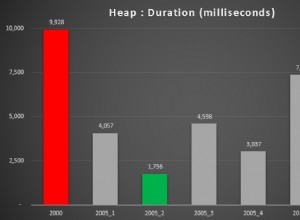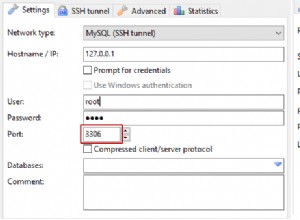Há 100 exemplos de pivô no SO, então eu queria mostrar uma maneira de fazer isso, que não é tão bom quanto pivô, mas funciona para sua instância. Ele pode não caber em todo o seu conjunto de dados e foi baseado apenas em seus dados de amostra.
É importante observar que seus dados de teste não fornecem os resultados que você afirma que fornecem. Provavelmente apenas um erro de digitação na inserção.
create table #Nodes(
Caption varchar(max),
IP_Address varchar(max),
NodeID varchar(max)
);
insert into #Nodes (Caption, IP_Address, NodeID)
values
('dev-srvr', '10.0.0.1', '29023'),
('prod-srvr', '10.0.2.1', '29056'),
('test-srvr', '10.1.1.1', '29087');
create table #Volumes(
Caption varchar(max),
NodeID varchar(max)
);
insert into #Volumes (NodeID, Caption)
values
('29023', '/'),
('29023', '/boot'),
('29023', '/dev/shm'),
('29023', '/home'),
('29056', '/'),
('29056', '/var'),
('29056', '/opt'),
('29087', '/tmp');
select
n.Caption,
n.IP_Address,
v.Caption as Volume
from #Nodes n
inner join #Volumes v
on n.NodeID=v.NodeID
where IP_Address like '10.0%'
;with cte as(
select
n.Caption,
n.IP_Address,
v.Caption as Volume,
ROW_NUMBER() over (partition by n.caption, IP_Address order by n.caption) as RN
from #Nodes n
inner join #Volumes v
on n.NodeID=v.NodeID
where IP_Address like '10.0%')
select
x.caption,
x.IP_Address,
max(Volume1) as Volume1,
max(Volume2) as Volume2,
max(Volume3) as Volume3,
max(Volume4) as Volume4
from(
select
Caption,
IP_Address,
case when RN = 1 then Volume end as Volume1,
case when RN = 2 then Volume end as Volume2,
case when RN = 3 then Volume end as Volume3,
case when RN = 4 then Volume end as Volume4
from cte) x
group by x.Caption, x.IP_Address
drop table #Nodes
drop table #Volumes
USANDO O PIVÔ DINÂMICO
create table #Nodes(
Caption varchar(max),
IP_Address varchar(max),
NodeID varchar(max)
);
insert into #Nodes (Caption, IP_Address, NodeID)
values
('dev-srvr', '10.0.0.1', '29023'),
('prod-srvr', '10.0.2.1', '29056'),
('test-srvr', '10.1.1.1', '29087');
create table #Volumes(
Caption varchar(max),
NodeID varchar(max)
);
insert into #Volumes (NodeID, Caption)
values
('29023', '/'),
('29023', '/boot'),
('29023', '/dev/shm'),
('29023', '/home'),
('29056', '/'),
('29056', '/var'),
('29056', '/opt'),
('29087', '/tmp');
DECLARE @DynamicPivotQuery AS NVARCHAR(MAX)
DECLARE @ColumnName AS NVARCHAR(MAX)
select
n.Caption,
n.IP_Address,
v.Caption as Volume,
'Volume' + cast(ROW_NUMBER() over (partition by n.caption, IP_Address order by n.caption) as varchar(16)) as Cname
--ROW_NUMBER() over (partition by n.caption, IP_Address order by n.caption) as RN
into #staging
from #Nodes n
inner join #Volumes v
on n.NodeID=v.NodeID
where IP_Address like '10.0%'
--Get distinct values of the PIVOT Column
SELECT @ColumnName= ISNULL(@ColumnName + ',','')
+ QUOTENAME(Cname)
FROM (SELECT DISTINCT Cname FROM #staging) AS Cname
--Prepare the PIVOT query using the dynamic
SET @DynamicPivotQuery =
N'SELECT Caption, IP_Address, ' + @ColumnName + '
FROM #staging
PIVOT(MAX(Volume)
FOR Cname IN (' + @ColumnName + ')) AS PVTTable'
--Execute the Dynamic Pivot Query
EXEC sp_executesql @DynamicPivotQuery
drop table #Nodes
drop table #Volumes
drop table #staging




